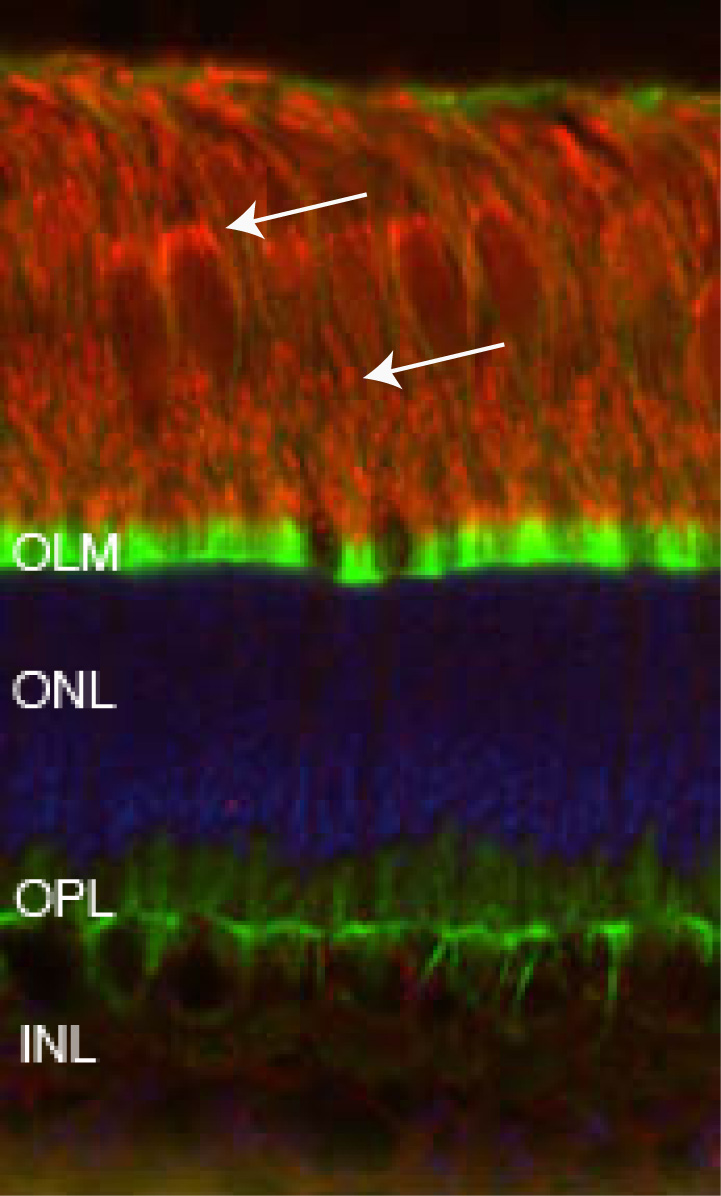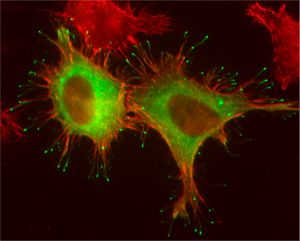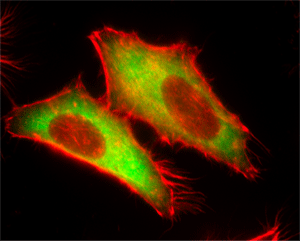

|
Myosin 3A
|
|||||||||||
|
Class III myosins are unusual in having an N-terminal kinase domain, suggesting that this motor may play a role in cell signaling as well as cell motility. Drosophila NINAC, the first class III myosin to be discovered, was initially identified as the defective gene causing an altered photoresponse and light-induced photoreceptor degeneration. We have obtained coding sequences for seven vertebrate class III myosins: two (complete coding sequences) from bass retina (3A and 3B), two (complete coding sequences) from human retina (HMYO3A and HMYO3B), two (one complete coding sequence and one incomplete) from zebrafish (DrMyo3A and DrMyo3B) and one partial sequence for chick myosin 3A. These are the first class III myosins to be identified in vertebrates. Myosin 3A is selectively expressed in photoreceptors. In photoreceptors, myosin 3A has been localized to the distal ends of actin filaments in the inner segment that terminate in the calycal processes surrounding the proximal portion of the outer segment. This was shown by immunohistochemistry in bass retina and by analysis of GFP-tagged fusion proteins expressed in transgenic Xenopus tadpole rods. From expression studies of various GFP:Myo3A truncations in Xenopus transgenic rods and in HeLa cells in culture, an active motor domain and the tail region of Myo3A have been identified as necessary for Myo3A localization to the distal end of actin filament bundles. Within the tail region there are two conserved domains (3THDI and 3THDII), one of which contains an actin-binding site. GFP:Myo3A expression in transgenic tadpole rods not only resulted in the accumulation of green fluorescence at the distal ends of inner segment actin filament bundles but the transgenic rods also contained abnormally large and long rod calycal processes. Expression of GFP:Myo3A resulted in the eventual degeneration of transgenic rods. These results suggest that Myo3A may play a role in the actin dynamics of filments in the inner segment/calycal processes. |
|||||||||||
 |
Dark adapted striped bass retina stained with an anti-myosin 3A antibody(red), F-actin staining with phalloidin (green), and DAPI (blue). Myosin 3A is detected in the inner segments of rods and cones. (arrows: OLM, outer limiting membrane; ONL, outer nucler layer; OPL, outer plexiform layer; INL, inner nuclear layer) |
||||||||||
|
Striped bass cone photoreceptor inner segment/outer segment preparation stained for myosin Myo3A (green) and F-actin staining with phalloidin (red). The actin filament bundles found in the inner segment that also make up the calycal processes surrounding the outer segment are stained with phalloidin. Myo3A localizes to the distal ends of these actin filament bundles. |
|||||||||||
|
Localization of GFP:Myo3A proteins in transfected HeLa cells. |
|||||||||||
 |
 |
||||||||||
 |
 |
||||||||||
|
Composite images of GFP fluorescence (green) and F-actin staining with phallodin (red) are shown. Clockwise from upper left: GFP:Myo3A localizes to the cytoplasm and filopodial tips. GFP:Myo3A (motor-inactive) localizes to the cytoplasm but not filopodial tips. GFP:Myo3AΔ3THDII localizes to the cytoplasm but not to the filopodial tips. GFP:Myo3AΔkinase localizes to the cytoplasm and filopodial tips. |
|||||||||||
| Back to Home Page | |||||||||||